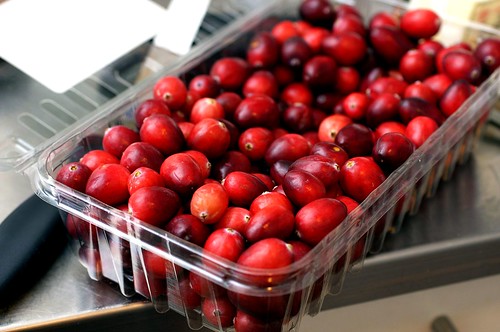
Cranberries have long been valued for their ability to help prevent and treat urinary tract infections. Now, recent studies suggest that this native American berry may also promote gastrointestinal and oral health, prevent the formation of kidney stones, lower LDL and raise HDL (good) cholesterol, aid in recovery from stroke, and even help prevent cancer.
Protection against Urinary Tract Infection
Cranberries have been valued for their ability to reduce the risk of urinary tract infections for hundreds of years. In 1994, a placebo-controlled study of 153 elderly women was published in the Journal of the American Medical Association that gave scientific credibility to claims of cranberries effectiveness in preventing urinary tract infection. In this study, the women given cranberry juice had less than half the number of urinary infections as the control group (only 42% as many, to be precise), who received a placebo imitation "cranberry" drink. The daily dose of cranberry juice in this initial study was just 300 milliliters (about one and one-quarter cups). Since then, a number of other studies have also confirmed anecdotal tales of cranberry's ability to both treat and prevent urinary tract infections. In most of these later studies, subjects drank about 16 ounces (2 cups) of cranberry juice daily.
How does cranberry juice help prevent urinary tract infections? It acidifies the urine, contains an antibacterial agent called hippuric acid, and also contains other compounds that reduce the ability of E. coli bacteria to adhere to the walls of the urinary tract. Before an infection can start, a pathogen must first latch on to and then penetrate the mucosal surface of the urinary tract walls, but cranberries prevent such adherence, so the E. coli is washed away in the urine and voided. Since E. coli is pathogen responsible for 80-90% of urinary tract infections, the protection afforded by cranberries is quite significant.
Studies attempting to explain cranberries' protective effects on urinary tract health were presented at the Experimental Biology Conference held in 2002. Amy Howell, research scientist at the Marucci Center for Blueberry Cranberry Research at Rutgers University and Jess Reed, professor of nutrition at the University of Wisconsin-Madison, compared the proanthycyanins (active compounds) in cranberries to those found in grapes, apples, green tea and chocolate. They discovered that "the cranberry's proanthocyanidins are structurally different than the proanthocyanidins found in the other plant foods tested, which may explain why cranberry has unique bacterial anti-adhesion activity and helps to maintain urinary tract health."
8-Ounces Better than 4 to Prevent Bladder Infections
Cranberry's protective effects against bladder infections may be dose responsive, with 8-ounces of cranberry juice being twice as effective as 4-ounces, suggests preliminary research presented at the 42nd Annual Meeting of the Infectious Diseases Society of America by Kalpana Gupta from the University of Washington.
Gupta reported the details of a very small trial in which three volunteers were given 27% cranberry juice cocktail. Urine samples, collected before and 4-6 hours after drinking the cranberry juice, were combined with human bladder cells and incubated with Escherichia coli (the most common cause of bladder infections). The number of bacteria able to adhere to the bladder cells (the first step a pathogen must achieve to be able to cause infection) was significantly reduced in the urine of all women who drank the cranberry juice cocktail, and the effect was doubled when the women drank eight ounces of cranberry rather than four ounces.
Cranberry's protective effect is thought to be due to a specific type of tannin, found only in cranberries and blueberries, which interferes with projections on the bacterium, preventing it from sticking to the walls of the bladder and causing infection. However, once the bacteria have established a hold, it's best to seek medical advice. No evidence shows cranberry juice is able to cure an established bladder infection, which can lead to a more serious kidney infection. The researchers plan further studies in a larger group of women to investigate the optimal amount and frequency of cranberry juice consumption.
Happy? ? ?





2 comments:
Cranberry is becoming obsolete for urinary tract infections. The new stuff called d-mannose is so much more effective that it can clear even a full blown infection in just a couple of days. So you don't have to take it everyday for prevention unless you want to.
Hey Underdog, thanks for stopping by my blog. I'm excited that you want to do a post about my blog :) I guess what's important about what I try to do is that: 1) I cook pretty healthy stuff- but none of it tastes like grass. 2) I try not to use ingredients that are impossible to find- has to stay simple and pretty much possible to find at a grocery.
That's it. I love cranberries too. A few years back, I found an herb called Uva Ursi. It's an astringent herb used especially for UTI's or bladder infections. Check is out, it's works really well.
In good health,
Lauren
Post a Comment